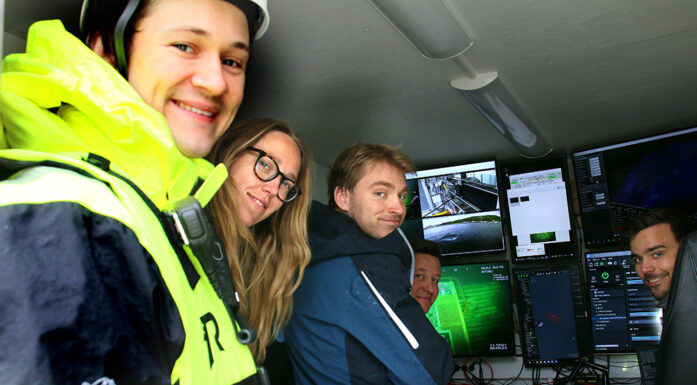Revealing the geology’s X-factor
This ten-tonne test rig has been custom-designed by Norwegian researchers and built under contract by American engineers. It has finally been installed at SINTEF after eight years of planning and construction. This mammoth of a device, nicknamed the “Polyax Rocker” is now set to re-create with ultra-high precision the geological stresses acting on oil reservoirs.
Oil reservoirs occur in geological formations and, like all other subsurface rocks, are subject to physical forces, including various stresses, that we should be aware of when we drill into the subsurface and produce oil.
“These forces act in all directions and it’s crucial that we understand how they behave in the subsurface”, say Laboratory Manager Jørn Stenebråten and researcher Lars Erik Walle at SINTEF Industry. “This machine succeeds in re-creating these stresses in an entirely new way”, they say. Traditionally, testing has been restricted to subjecting rock samples to independentstresses in two directions (biaxial testing). This is an oversimplification of the real conditions in the subsurface. However, the new, specially-designed, equipment enables researchers to re-create much more realistic conditions, with different forces acting in three directions (true triaxial testing).
“It is vital to have as much knowledge as possible about the physical conditions in and round the reservoir”, explains Stenebråten, from SINTEF Formation Physics. “There is always a danger when drilling into a formation that a well will collapse if we’re not adequately prepared to compensate for variations in the various stresses acting in the subsurface. It quickly becomes a very expensive business if a well collapses and the drilling equipment has to be abandoned”, he says.
In order to understand and prepare for the physical conditions in the subsurface, tests are performed on core samples obtained either from wells or similar geological formations. The test equipment enables core samples to be tested under forces acting in a variety of directions and at different strengths, simulating typical conditions in the subsurface. The tests can simulate non-vertical wells or other scenarios that may arise during drilling or production. The test results are used as input data to further numerical simulations, and in the construction of models that can be used to develop safer and less expensive drilling methods, leading to higher hydrocarbon recovery factors.
Even the price tag, at NOK 15 million, doesn’t discourage the two researchers. “If we can help to make drilling operations safer, and at the same time promote improved recovery, the industry will soon increase its revenues many times over”, explains Walle.
This also makes Stenebråten relatively relaxed about having to demolish one of the walls of his lab, and then rebuild the facility to make room for the new innovation.
“Sometimes we have to make small sacrifices in the cause of new knowledge, new opportunities and extra precision”, he says.




